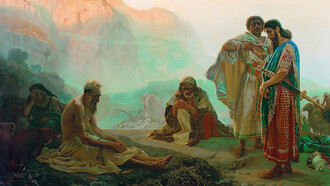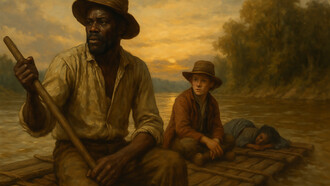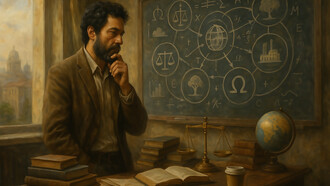In my role as tour guide in the Jewish Museum of Rome and Vatican Museums, I am often asked by participants on my tours about the actions of Pope Pius XII. As Jewish homes were still asleep, the Jews of Rome were taken by surprise when Nazi soldiers arrived and began to arrest women, men, and children on a cold, rainy Sabbath day—October 16th, 1943.
In 2019, I had the honor of interviewing four renowned Vatican scholars: Dr. Johan Ickx, Deacon Dominick Oversteryne, and the late Father Kurt Peter Gumpel and Dr. Michael Hesemann for an independent study project, “The Jews of Rome and Pope Pius XII”. This interview laid the groundwork for an essay which I submitted to the Spertus Institute for Jewish Learning and Leadership and presented at the European Jewish Studies Conference at the University of Nebraska in Omaha.
It was an exciting time in history, as scholars from around the globe were patiently waiting for the Vatican Archives to open up on the morning of March 2nd, 2020.
Holocaust and church historians began reading unexplored primary documents from Pope Pius XII’s pontificate. As they prepared for months and months of research, the world stopped. COVID closed the doors to all archives worldwide.
However, I came to learn that the vast majority of the war-time documents are not located in the Apostolic Archives. They can be researched and unearthed in the archives of thousands of independent Catholic Communities, archives of apostolic nunciatures world wide and unassociuated government archives. Furthermore, this treasure trove of history, has been available since the end of WWII but sadly have been mostly ignored by scholars, which explains such a stark difference in published history.
My independent research, which I had hoped to advance further once I entered a doctorate program, had also come to a complete stop. I would have to wait a few years to decide if I wanted to return to my academic quest to investigate the two opposing questions, which I am often asked by participants on my walking tours of the silence of Pius XII:
There are historians who are quite condemnatory of the actions, or failure to act, of Pope Pius XII regarding the Roman Jewish deportation and the Holocaust in general. His silence regarding the Nazi genocide against the Jews weighs more than anything his defenders claim he did on their behalf. Was Pope Pius XII’s silence the key factor in protecting over 8,000 Jews in Rome on October 16th, 1943, from arrest and initiating the Vatican‘s worldwide rescue effort? The Catholic Church’s actions are said to have been the greatest lifesaving humanitarian effort in history.
In order to provide informed and objective responses to these questions, I am looking forward to renewed research on the topic of Pope Pius XII and the Jews of Rome as I pursue my doctoral studies at Spertus Institute. The "real-world" application of my research conclusions will become highly useful to me in my present service and connections as a tour guide in Rome.
A fundamental difference between Jewish and secular education is that Judaism requires all Jews to study throughout their entire lives. Secular education, on the other hand, focuses on mastering a particular subject within a particular time constraint, although, of course, the learning continues.
If there is one thing I have learned throughout my very long scholarly journey, taking me to Rome and the Vatican, it is this: that women of maternal Spanish Converso descent and from lower economic backgrounds have the endurance and perseverance to navigate through failure, hardships, and racism. They are gifted with the mental strength to confront and withstand all forms of injustice and bias in academia.
It is my own bicultural background and areas of expertise as a scholar that make it easy for me to examine both sides of the argument regarding Pius XII from an objective point of view.
During the two decades of my providing guided tours in the Vatican Museum and the Jewish Museum of Rome, this has become my real-life doctoral degree project: (currently in progress) “A Tour Guide’s Doctoral Project: Pope Pius XII and the Roman Jews.”
During a guided visit to the Jewish Museum of Rome, visitors will learn that Pope John Paul II was the first pope to enter, on April 13th, 1986, Rome’s Great Synagogue. He was also the first pontiff to recognize the state of Israel and formally express regret for the Catholic Church’s past treatment of Jewish people.
During a guided visit to the Vatican Museums, visitors are greeted by a modernesque statue depicting John Paul II in the center of the vast entrance. The artist, Giuliano Vangi (1999), offered an explanation of his showcased work: “Crossing the Threshold” depicts the Pontiff pushing a young man into the world, encouraging him to become involved."
The relations between the Roman Catholic Church and the Jews of Rome—and elsewhere—have been “tormented” and deeply troubling. Nevertheless, with various resources at my disposal and as a bi-cultural scholar who lives in Italy, I am in a unique position to ease some of this “torment” by reaching an understanding of both sides through my focused and dedicated research.
In my work as a “real life” tour guide in Rome, including the Jewish Museum and the Vatican, I hope to uncover “real life” stories behind the various misperceptions and tensions surrounding this event and the personages' involved, and the clarity I bring forth will also serve as a bridge to further connections among all these good human beings.
Did Pius XII act or fail to act because of indifference, malice, or benevolence?
After all, Jesus from Nazareth, the Nazarene, and his family lineage, as well as all his friends and followers, were Jews!















